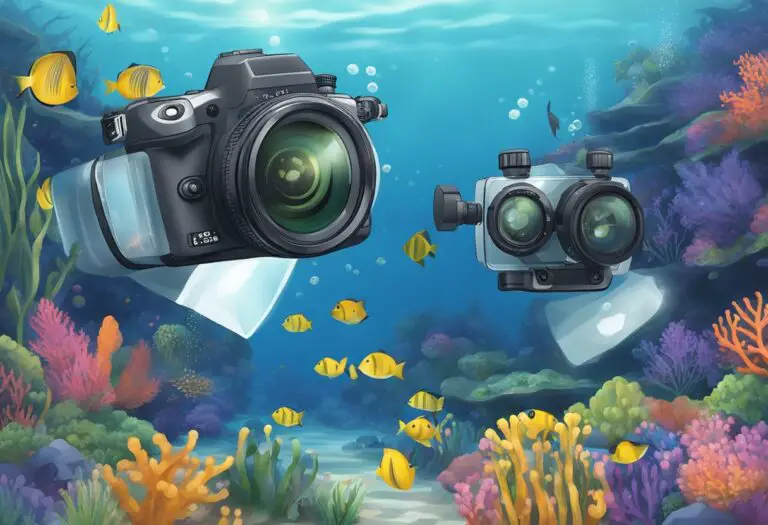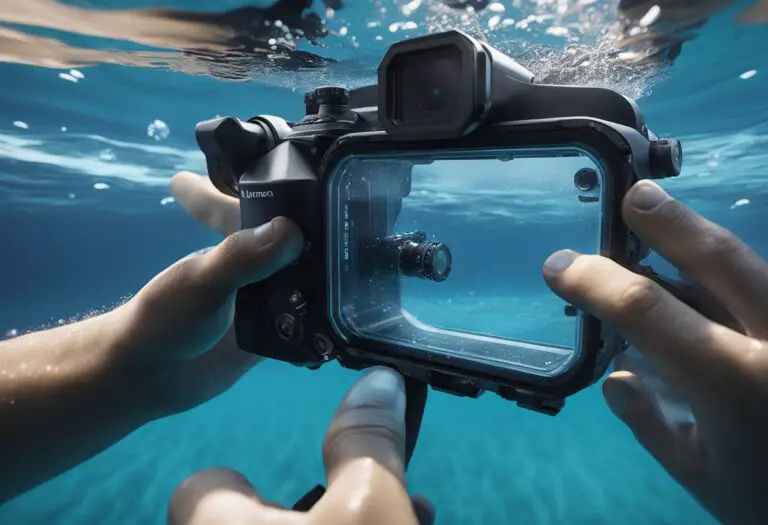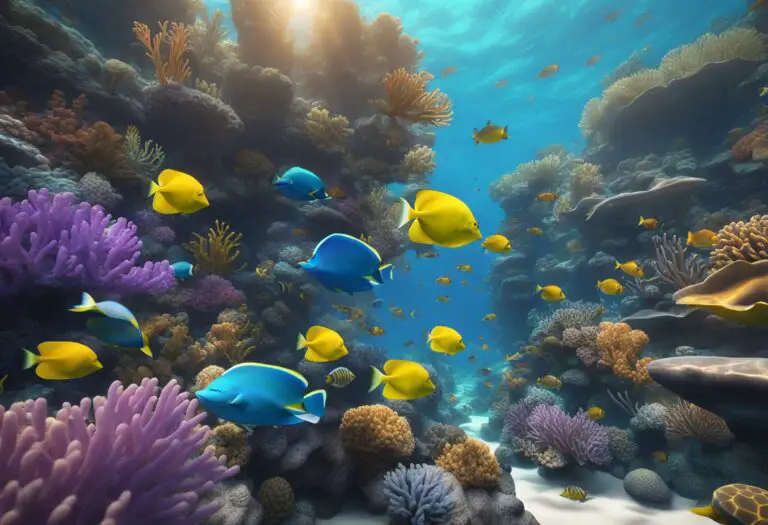How to Choose the Best Underwater Camera for Photography
Choosing the best underwater camera for photography can be a daunting task, especially for those who are new to the world of underwater photography. With so many options available on the market, it can be challenging to determine which camera will best suit your needs and budget. However, by considering certain factors, you can make an informed decision and select a camera that will capture stunning underwater images.
One of the most important factors to consider when choosing an underwater camera is its waterproof rating. Different cameras have different waterproof ratings, and it’s crucial to select a camera that can withstand the depth and pressure of the water you’ll be diving in.
Additionally, it’s essential to consider the camera’s image quality, as well as its size and weight, as these factors can impact your ability to capture clear and sharp images underwater. By taking these factors into account, you can choose a camera that will meet your specific needs and allow you to capture stunning underwater photographs.
Understanding Underwater Photography

Underwater photography is a unique and challenging art form that requires specialized equipment and techniques. To capture stunning images of the underwater world, it’s important to understand the challenges of shooting underwater and the benefits of using specialized underwater cameras.
Challenges of Underwater Shooting
Shooting underwater presents a number of challenges that are not present in traditional photography. One of the biggest challenges is the loss of color and contrast as light passes through water. Water absorbs and scatters light, making colors appear dull and washed out. To combat this, underwater photographers often use artificial light sources, such as strobes or video lights, to add color and contrast to their images.
Another challenge of underwater shooting is the distortion caused by water. Water has a higher refractive index than air, which means that light bends more as it passes through water. This can cause objects to appear larger or closer than they actually are, and can make it difficult to judge distance and size. To compensate for this, underwater photographers often use wide-angle lenses, which have a wider field of view and can capture more of the underwater scene.
Finally, underwater photography requires specialized equipment that is designed to withstand the harsh underwater environment. Cameras and lenses must be waterproof and able to withstand pressure, and housings must be used to protect the camera from water damage.
Benefits of Specialized Underwater Cameras
Using a specialized underwater camera offers a number of benefits over traditional cameras. Underwater cameras are designed to work in the challenging underwater environment, and are often waterproof and shockproof. They also often have specialized features, such as underwater modes, that are designed to optimize image quality in underwater settings.
One of the biggest benefits of using an underwater camera is the ability to capture stunning images of the underwater world. Underwater photography allows you to capture the beauty and diversity of marine life, and to explore the hidden depths of the ocean.
In summary, understanding the challenges of shooting underwater and the benefits of using specialized underwater cameras is essential for capturing stunning images of the underwater world. With the right equipment and techniques, anyone can become an accomplished underwater photographer.
Key Features to Consider

When it comes to choosing the best underwater camera for photography, there are several key features to consider. Here are some of the most important ones:
Waterproof Depth Rating
One of the most crucial factors to consider when choosing an underwater camera is its waterproof depth rating. This rating indicates how deep the camera can be submerged without getting damaged. Different cameras have different depth ratings, so it is essential to choose one that is suitable for your needs. If you plan on doing deep-sea diving, you’ll need a camera with a higher depth rating than if you plan on just snorkeling.
Image Quality and Sensor Size
Another essential feature to consider is image quality. A good underwater camera should be able to capture high-quality images with accurate colors and sharp details. The sensor size also plays a significant role in image quality. A larger sensor size allows for better low-light performance and greater dynamic range. It is essential to choose a camera with a sensor size that suits your needs.
Manual Controls and Custom Settings
Manual controls and custom settings are also crucial features to consider when choosing an underwater camera. These features allow you to adjust settings such as aperture, shutter speed, and ISO to get the perfect shot. Cameras with manual controls and custom settings are ideal for more experienced photographers who want complete control over their images.
In summary, when choosing the best underwater camera for photography, it is essential to consider the waterproof depth rating, image quality and sensor size, and manual controls and custom settings. By taking these features into account, you can find a camera that suits your needs and helps you capture stunning underwater images.
Camera Types and Housing Options
When it comes to underwater photography, choosing the right camera and housing is crucial. There are various camera types and housing options available in the market, each with its pros and cons. In this section, we’ll discuss the different camera types and housing options to help you make an informed decision.
Compact vs. DSLR vs. Mirrorless
The three main camera types for underwater photography are compact, DSLR, and mirrorless. Compact cameras are small, lightweight, and easy to use. They are a great option for beginners or those who want a simple and affordable setup. However, the image quality and versatility of compact cameras are limited compared to DSLR and mirrorless cameras.
DSLR cameras are larger and more complex than compact cameras, but they offer superior image quality, interchangeable lenses, and advanced features. They are the preferred choice of professional underwater photographers. However, DSLR cameras are expensive and require more maintenance than compact cameras.
Mirrorless cameras are a hybrid between compact and DSLR cameras. They are smaller and lighter than DSLR cameras but offer similar image quality and interchangeable lenses. Mirrorless cameras are a good option for those who want a high-quality setup without the bulk and weight of a DSLR camera.
Integrated vs. External Housing
Once you’ve chosen your camera type, the next step is to select the housing. There are two types of housing options: integrated and external. Integrated housing is built into the camera and is designed to be used exclusively with that camera model. External housing is a separate unit that can be used with various camera models.
Integrated housing is more convenient and compact than external housing, but it limits your camera options. If you want to upgrade your camera, you’ll need to buy a new housing as well. External housing is more versatile and allows you to switch between camera models without having to buy a new housing. However, external housing is bulkier and requires more maintenance than integrated housing.
In conclusion, choosing the right camera and housing for underwater photography depends on your skill level, budget, and preferences. Consider the pros and cons of each camera type and housing option before making a decision.
Top Models and Brands
Popular Underwater Camera Models
When it comes to choosing the best underwater camera for photography, there are a few popular models that stand out. These cameras are known for their quality, reliability, and performance in underwater environments.
- Olympus Tough TG-6: This camera is a popular choice among underwater photographers due to its rugged design and impressive features. It has a 12-megapixel sensor, 4x optical zoom, and can shoot 4K video. It also has a waterproof rating of up to 50 feet.
- Canon PowerShot D30: Another popular option is the Canon PowerShot D30, which has a 12.1-megapixel sensor, 5x optical zoom, and can shoot 1080p video. It has a waterproof rating of up to 82 feet, making it a great choice for deep dives.
- Nikon COOLPIX W300: The Nikon COOLPIX W300 is a versatile camera that can handle a variety of environments, including underwater. It has a 16-megapixel sensor, 5x optical zoom, and can shoot 4K video. It also has a waterproof rating of up to 100 feet.
Reputable Brands in Underwater Photography
When it comes to underwater photography, there are a few brands that are known for their quality and reliability. These brands have a reputation for producing cameras that can handle the unique challenges of underwater environments.
- Olympus: Olympus is a well-known brand in the underwater photography world. They produce a range of cameras that are designed to handle tough environments, including the Tough TG-6.
- Canon: Canon is another reputable brand that produces cameras that can handle underwater photography. Their PowerShot D30 is a popular choice among divers and snorkelers.
- Nikon: Nikon is known for producing high-quality cameras that can handle a variety of environments, including underwater. Their COOLPIX W300 is a versatile camera that can handle a range of conditions.
Overall, when choosing an underwater camera for photography, it’s important to consider both the camera model and the brand. By choosing a reputable brand and a popular model, you can ensure that you’re getting a camera that will perform well in underwater environments.
Practical Tips for Selection
When choosing an underwater camera for photography, there are several practical tips to consider to ensure you make the right choice. The following tips will help you make an informed decision.
Budget Considerations
One of the first things to consider when selecting an underwater camera is your budget. Underwater cameras can range from a few hundred dollars to several thousand dollars. It is important to set a budget and stick to it, as there are many options available at different price points.
While it may be tempting to go for the most expensive camera, it is important to remember that the most expensive camera may not always be the best choice for your needs. Consider your skill level and the type of photography you plan to do underwater before making a purchase.
Evaluating User Reviews and Expert Opinions
Another practical tip for selecting an underwater camera is to evaluate user reviews and expert opinions. Reading reviews from other photographers who have used the camera can provide valuable insight into the camera’s performance and durability.
Expert opinions from reputable sources such as photography magazines and websites can also provide valuable information about the camera’s features and performance. It is important to consider both user reviews and expert opinions when making a decision, as they can provide different perspectives on the camera’s strengths and weaknesses.
In conclusion, selecting the best underwater camera for photography requires careful consideration of your budget, skill level, and photography needs. Evaluating user reviews and expert opinions can also provide valuable insight into the camera’s performance and features. By following these practical tips, you can make an informed decision and choose the best camera for your needs.
Final Words
Choosing the best underwater camera for photography can be a daunting task, but with the right information, it can be a breeze. The key is to consider your needs and budget, as well as the camera’s features and capabilities.
When it comes to underwater photography, image quality is paramount. Look for a camera with a high resolution and good low-light performance. Additionally, consider the lens and aperture size, as these factors can greatly impact the quality of your photos.
Another important aspect to consider is the camera’s durability and waterproof rating. Make sure the camera is designed to withstand the conditions you plan to use it in and that it has a waterproof rating that meets your needs.
Finally, don’t forget about the camera’s usability and ease of use. Look for a camera with intuitive controls and a user-friendly interface, as this will make it easier to get the shots you want.
Overall, choosing the best underwater camera for photography requires careful consideration of a range of factors. By taking the time to research and compare your options, you can find a camera that meets your needs and helps you capture stunning underwater photos.







